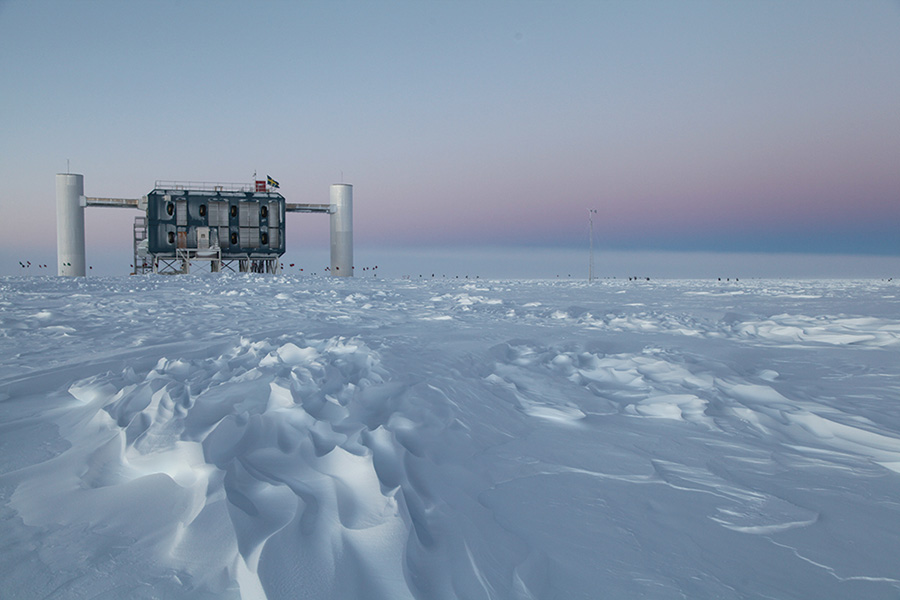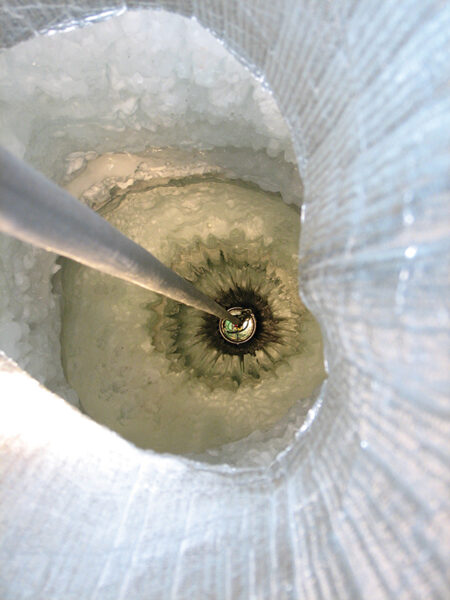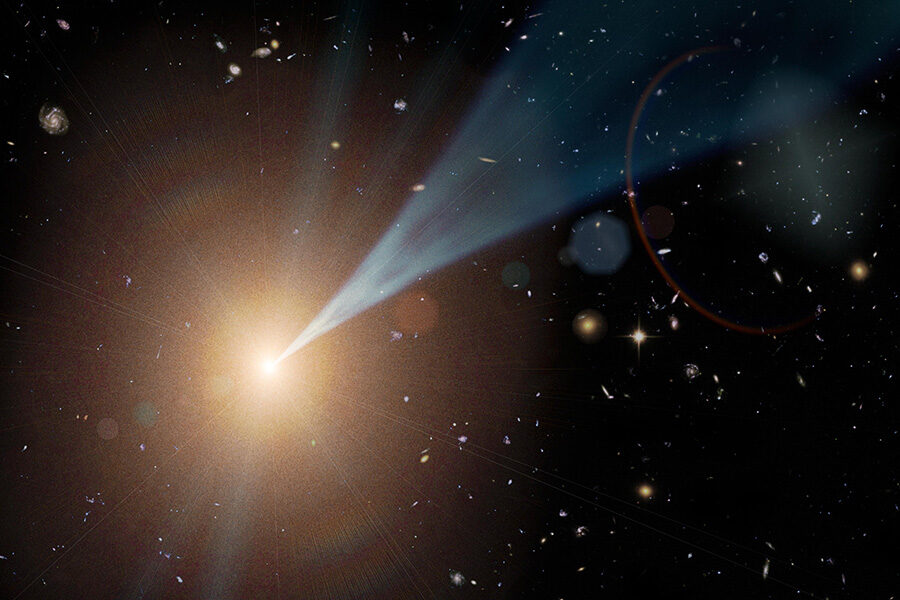Blazars, the gas-guzzling black holes at the center of galaxies, could produce most of the tiny particles known as neutrinos we catch on Earth.
When the Large Hadron Collider first turned on, there were some who feared it might make black holes that would swallow Earth whole. Amusing to think of, when you consider that the universe can generate subatomic particles with a million times more energy than what humans and their machines are capable of.
But what in the universe is capable of imbuing these tiny particles, dubbed cosmic rays, with such incredible energy? It’s impossible to tell, because most of these particles are negatively or positively charged, which means they must obey the curvature of tangled magnetic field lines in the space between stars.
There’s hope, though: The same processes that make cosmic rays also produce even tinier subatomic particles known as neutrinos. “Astrophysical neutrinos are produced exclusively in processes involving cosmic ray acceleration,” explains Sara Buson (Julius-Maximilians University, Germany). And since neutrinos are neutral, they ignore magnetic fields and travel straight to Earth. Trace back the neutrinos’ paths and you find their source.
At least that’s the idea in principle, but in practice it hasn’t been that easy. The giant IceCube neutrino observatory, inserted 1.35 kilometers (0.8 mile) deep in the clear-blue ice of the South Pole, detects only 10 or so neutrinos a year that pack enough punch to indicate that they coe directly from outer space. (Cosmic rays impacting Earth’s atmosphere can generate lower-energy neutrinos that, while interesting in their own right, can’t be tied directly to cosmic sources.)
Neutrino Catcher

Sven Lidstrom, IceCube / NSF

Mark Krasberg, IceCube / NSF
Travel through the strings of sensors buried beneath the ice in this artist's conception. The sensors pick up the faint trails of light produced in the rare interactions between subatomic particles and ice molecules.
WIPAC / MPM
Neutrino Makers
Correlating high-energy neutrinos to astrophysical sources is tricky when there are so few of them and millions of possible sources. But now, Buson’s team says they’ve done just that, tying the astrophysical neutrinos that IceCube has detected to blazars at the centers of galaxies. In such objects, a supermassive black hole guzzles gas only to spew some of it out again in a jet that travels near the speed of light.
The team compared the distribution of neutrinos on the sky to the distribution of a list of blazars, compiled in a catalog called BZCat, and found they matched surprisingly well: 10 out of 19 neutrino “hot spots” in the southern sky match up with known blazars. The chance of that association being a coincidence is only one in a million, Buson says.

NASA / JPL-Caltech
The results, which appear in the Astrophysical Journal, extend previous studies that had found only a tenuous link between neutrinos and blazars. But those studies had focused on blazars that emit gamma rays, high-energy photons that would have to come from the black hole’s jets. Shock waves in the rush of plasma would form natural particle accelerators that exceed anything humans have yet built.
In this case, though, because Buson and colleagues looked at blazars that aren’t emitting lots of gamma rays, they showed that the neutrinos aren’t coming from shocks in the jets themselves but rather from the disk of gas swirling into the black hole or perhaps from gas above that disk that’s just launching into the jet.
“Blazars do produce gamma rays, of course, but not at the time that neutrinos are produced,” says principal investigator of the IceCube Observatory Francis Halzen (University of Wisconsin, Madison), who was not involved in the current study. “Gamma rays are produced by electrons in the jet, which . . . does not contain sufficient target material to produce neutrinos.”
“The paper confirms this picture with 9 of the 10 sources not seen in gamma rays by Fermi,” Halzen adds.
The result thus not only narrows down the source of IceCube’s high-energy neutrinos, but it also confirms that the mechanism necessary to produce them lies in the environment around the black hole itself.
 0
0









Comments
You must be logged in to post a comment.